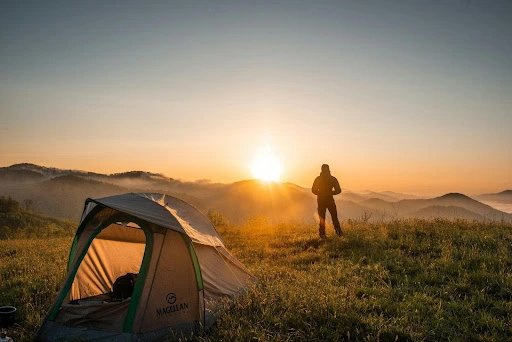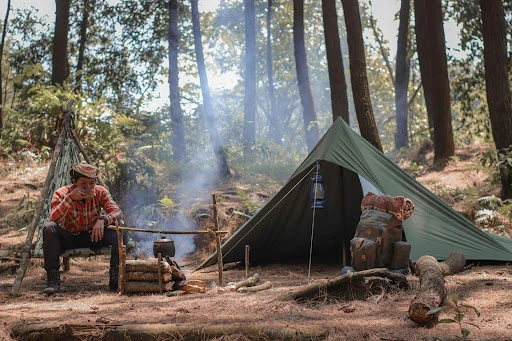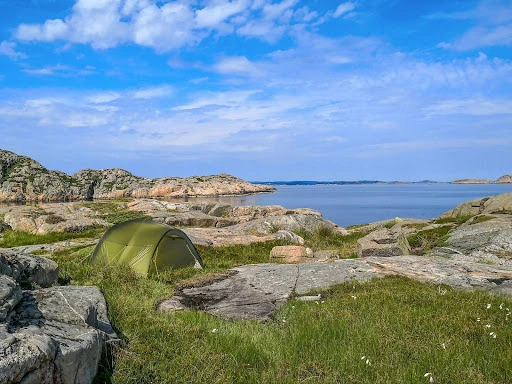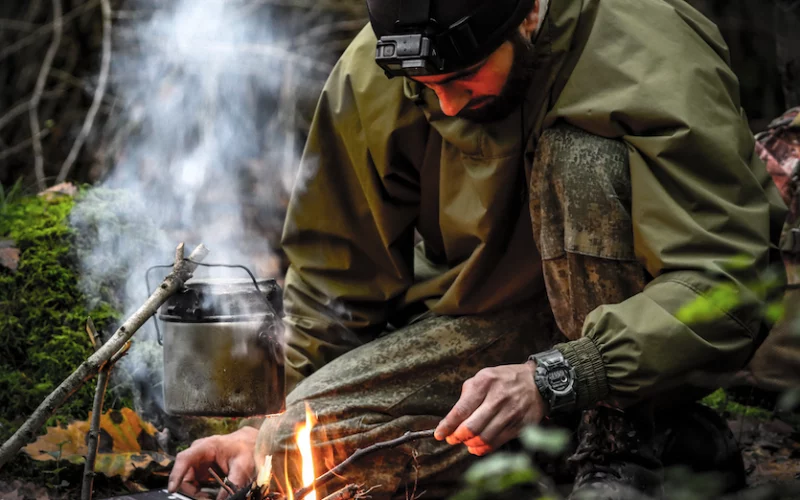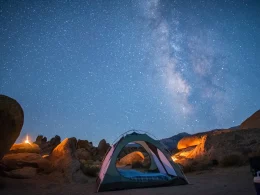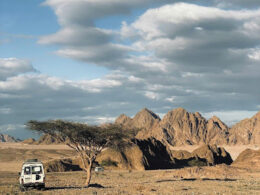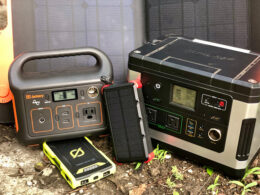Choosing between a hammock or a tent for camping often boils down to personal preference. Both offer unique experiences in nature. Yet, they serve different needs and interests.
Tents provide a classic camping experience, offering shelter and comfort on the ground. Hammocks, on the other hand, promise a lightweight and novel way to enjoy the outdoors up in the air.
This article takes a look into the hammock versus tent debate. You’ll learn the pros and cons of each and discover which is best for particular environments and camping styles. By the end, you’ll have a good understanding of what to expect from both.
Table of Contents
Different Personal Factors
Individual preferences and health considerations can greatly influence your choice. Some people like to sleep on their side, which may be difficult in a hammock. If you suffer from chronic pain then a hammock may be easier on the body when you’re lying down.
Comfort Preferences
Comfort preferences are subjective and vary widely among campers, directly impacting the choice between a hammock and a tent. For those who enjoy sleeping under the stars but prefer not to feel every contour of the ground, a hammock might be the ideal choice. It offers a unique floating sensation that many find soothing and can result in a faster onset of sleep.
Tents are traditionally favored for their familiar bedding setup, capable of accommodating thick pads, air mattresses, or cots. Tents also provide a sense of privacy and protection that some campers might prefer over the openness of a hammock.
Health Considerations
Health conditions can also influence the choice between a hammock and a tent. If you suffer from back issues or certain types of arthritis, sleeping on a flat surface provided by a good quality pad and sleeping bag inside a tent may offer better support and comfort.
The ergonomic design of hammocks can be beneficial for those who find relief in the gentle curvature, as it may reduce pressure points and improve circulation. For myself, I often wake up sore on a camping mat, regardless of the thickness or ground type. Hammocks are my go-to in the warmer months to avoid the morning pain.
Where Can You Use It?
Choosing between a tent or hammock setup also heavily depends on the environment and the natural features of your camping location. This is where the product’s adaptability to various terrains and weather conditions comes into play.
Weather Influence
The suitability of tents versus hammocks often hinges significantly on weather conditions. Tents, with their enclosed structure, offer superior protection against a range of elements – from heavy rain and snow to biting winds. They come equipped with waterproof rainflies and ground sheets that keep the interior dry and warm.
Hammocks are more suitable for fair-weather camping. Although hammock campers can use tarps for rain protection and under quilts for insulation, their open design makes them less effective against prolonged or severe weather conditions.
If you’re in hot and humid climates, however, hammocks take advantage by providing better air circulation underneath and reducing the risk of overheating during the night.
Terrain Types
The nature of the camping ground plays a crucial role in determining whether a tent or hammock is more practical. Hammocks require sturdy trees for anchor points and are ideal for forested areas where the ground might be uneven, rocky, or covered with underbrush. This allows you to be elevated off the ground, avoiding wet or uneven terrain conditions.
Tents, in contrast, need relatively flat and clear ground for a comfortable and safe setup. They’re versatile in their placement, you can place them on sandy beaches or rocky mountain terrains, as long as a flat surface can be found or created. However, in settings where trees are sparse or the ground offers a stable platform, tents provide an undeniable advantage.
Practical Aspects
When considering a tent versus a hammock for camping, it’s important to evaluate various practical aspects that greatly impact the camping experience. These aspects include the ease of setup and takedown, portability, and the level of protection each option offers against the elements.
Setup & Takedown
The setup and takedown process of tents and hammocks can vary significantly in terms of time and effort required. Tents typically involve a more complex setup process, requiring the assembly of poles, securing the tent body, and attaching the rainfly. This can take anywhere from 10 minutes to over half an hour, depending on the tent’s size and design.
Setting up a hammock generally involves less time and fewer components, usually just the hammock itself and a couple of straps to secure it between two trees. The takedown process mirrors the setup, with hammocks often being quicker and simpler to pack away than tents.
Portability
On the front of portability, hammocks usually take the lead. Most hammocks are lightweight and compact, able to fit easily into a backpack without taking up much space. They’re ideal for backpackers looking to minimize weight and bulk.
Tents, particularly larger models designed for multiple occupants, can be significantly heavier and bulkier. That said, advancements in tent technology have led to the development of ultralight tents that challenge hammocks in terms of portability.
Protection Level
When it comes to protection from environmental elements, tents generally offer superior shelter. They provide a fully enclosed space, shielding occupants from rain, wind, and pests. High-quality tents are equipped with materials and features designed to handle various weather conditions effectively.
Hammocks can be adapted for rain protection with tarps and insulation under quilts, their open design inherently offers less protection from cold temperatures, pests, and severe weather conditions.
Tent Camping: Pros & Cons
Tent camping has long been the traditional choice for outdoor enthusiasts seeking a way to immerse themselves in nature. Here are the key advantages and disadvantages to help you determine if tent camping is the right outdoor adventure for you.
Pros
- Full Protection: Tents offer a complete barrier from weather conditions, insects, and animals.
- Space: There’s often more room in a tent, allowing for comfortable sleeping and storage of gear.
- Versatility: Tents can be set up in a variety of locations, including those without trees.
- Privacy: A tent provides a private space, which can be particularly valuable in busy camping areas.
Cons
- Bulk and Weight: Tents can be heavy, impacting portability.
- Set-up Time: Pitching a tent can be time-consuming and requires practice to do efficiently.
- Cost: High-quality tents that offer durability and weather resistance can be expensive.
- Maintenance: Tents require care to prevent mold, wear, and tear.
Despite these considerations, tent camping remains a popular choice for many. It’s the perfect example of the traditional camping experience, providing a sense of security and comfort under the stars.
Hammock Camping: Pros & Cons
Hammock camping offers a unique and minimalist approach to spending time outdoors, blending seamlessly with the environment. Assessing its benefits and drawbacks can guide campers in deciding if this style suits their outdoor adventures.
Pros
- Reduced Impact: Hammocks have a smaller footprint, minimizing impact on the natural environment.
- Comfort: Many find sleeping in a hammock more comfortable, reducing pressure points compared to ground sleeping.
- Ventilation: Elevated sleeping provides excellent air circulation, keeping campers cool during warmer nights.
- Set-up Flexibility: Hammocks can be set up between trees in locations where tents might not be feasible.
Cons
- Limited Protection: Though tarps and under quilts enhance protection, hammocks are inherently less shielded from the elements than tents.
- Space: Hammocks usually accommodate one person, limiting space for companionship or storing gear.
- Dependency on Trees: Finding a suitable spot can be challenging in tree-scarce areas.
- Cooler Sleeping: The air circulation that benefits hot nights can become a disadvantage in colder conditions, necessitating additional insulation.
Hammock camping is lighter in the pack for most situations so it’s great for those traveling. There are plenty of add-ons you can purchase for hammocks that help make them effective throughout the year, even in the winter. The only real issue is trying to find trees for them…
Final Thoughts
I wish there was a definitive answer that I could give you to help make the choice easier. You’ll need to understand the area that you’re camping in, what kind of weather you’re heading into, and if your body is comfortable sleeping in the method that you are choosing.
As you become familiar with camping you can add both to your kit since a hammock can be a small addition to your pack. This gives you flexible options if you’re venturing into unknown terrain

